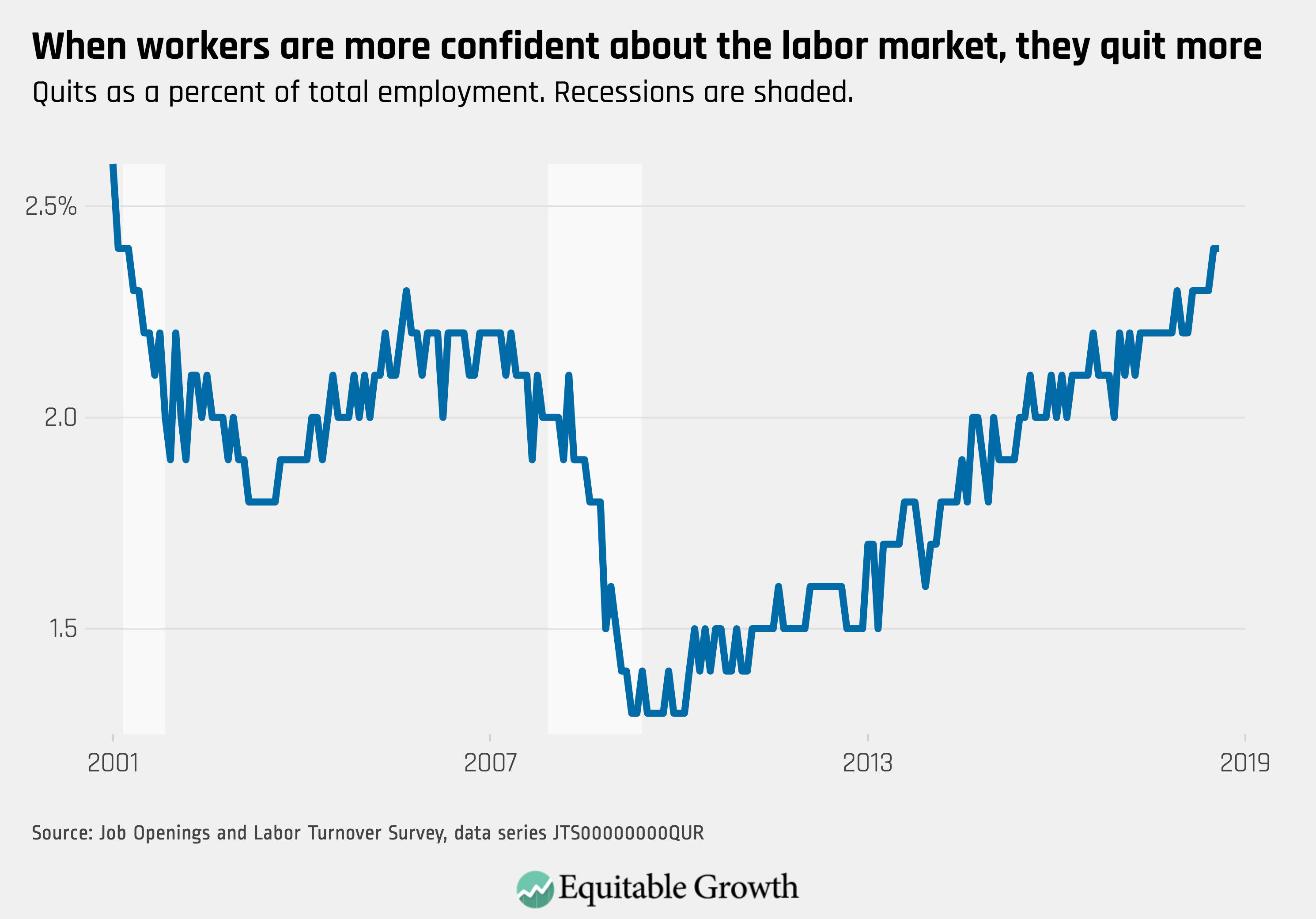Weekend reading: “state of the economy” edition
This is a weekly post we publish on Fridays with links to articles that touch on economic inequality and growth. The first section is a round-up of what Equitable Growth published this week and the second is the work we’re highlighting from elsewhere. We won’t be the first to share these articles, but we hope by taking a look back at the whole week, we can put them in context.
Equitable Growth round-up
Equitable Growth’s Kate Bahn and Austin Clemens analyzed the data from the most recent release of the Job Openings and Labor Turnover Survey (commonly known as JOLTS) by the U.S. Bureau of Labor Statistics. The data substantiate a tightening labor market with hiring, firing, and other labor market flows largely restored to their pre-Great Recession levels—despite persistent inequalities across demographic groups.
Brad DeLong rounds up his latest worthy reads on equitable growth from both inside and outside Equitable Growth.
Delaney Crampton wrote a value-added blog post this week on modern gerrymandering of local school districts in the United States. The piece looked at the recent trend of school districts being redrawn to keep low-income students out, the impact it has on these students, and possible policy solutions for addressing the issue.
Links from around the web
“Is the American Economy rigged?” That is the big question that Joseph Stiglitz attempts to tackle in a piece by the same name. In the piece, Stiglitz points out the epic heights of inequality that the United States has climbed to over the past 40 years and attempts to explain how we got to where we are. (scientificamerican)
Matthew Yglesias looks back on the Great Recession and asserts his concerns that bad macroeconomic stabilization policy may be a source of future avoidable suffering. Yglesias argues that little has been done to stop the next “Great Recession.” (vox)
Despite President Trump’s disapproval and the bad news for prospective borrowers, Neil Irwin argues that rising interest rates are good news for the long-term direction of the economy. In his piece, Irwin says that rising interest rates point to a more persistent recovery and are not driven by expectations that inflation will soar higher. (nyt)
Katherine Newman dissects whether a record stock market and low unemployment can survive in the long run despite high inequality. Newman unpacks this question by reviewing the work of multiple economists. (washingtonpost)
The United States falls in the middle of the pack when it comes to helping its residents reach their potential, well behind many East Asian and European countries. Andrew Van Dam and Jeanne Whalen breaks down data from the World Bank, which estimates the United States enables its population realize around 76 percent of its potential. (washingtonpost)
Friday Figure

Figure is from “Equitable Growth’s: JOLTS Day Graphs: August 2018 Report Edition”

